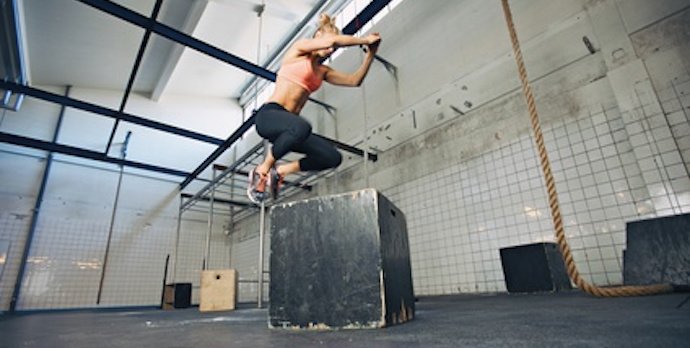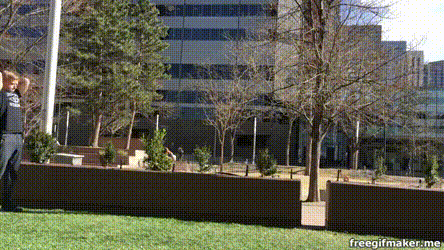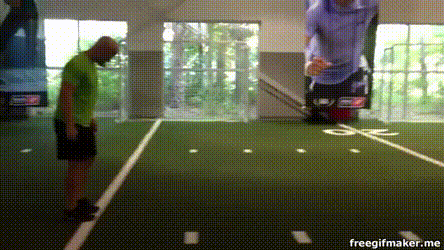
Do you wish to emulate the power of Marcel Garcia? How about the explosiveness of Erberth Santos? Add plyometric training to your strength and conditioning routine. Plyometric training for grappling is simple but hard. So, if you’re prepared to really grind, we’re going to give you the perfect training program.
When people think of plyometric training, the image of someone jumping like on cocaine comes to mind. While jumps do play a large part in it, plyometric training is much more than just that. Furthermore, training plyometrics for BJJ is a whole different ballgame. There are certain aspects of grappling that greatly benefit from explosive power. This is exactly what plyometric training for grapplers should develop. Specific explosive strength in the hips and legs is crucial for anyone involved in Brazilian Jiu-Jitsu.
The main problem with plyometric training is usually programming. People might even get the exercises right, but they’ll certainly mess up the intensity. Plyometric training for grapplers needs to be carefully planned so that the athletes don’t burn out. This kind of training has huge nervous system demands. Couple that with the demands of training Jiu-Jitsu and you’ve got a recipe for disaster if you overdo it. So, when should you add in plyometric training for grappling? How much should you do? What are the absolute best exercises? The answers to all these questions are here. Read on.
What Is Plyometric Training?
First of all, let’s get the basics out of the way. Plyometric training involves quick and powerful movement that is intended to develop explosive power. They involve multiple muscle groups or the whole body and require the nervous system to involve a lot more than strength training. In short, plyometric training is explosive training that leads to the development of power.
Plyometric training can be done in plenty of different ways. When it comes to grappling, though, most of them play a minor role and are not a good fit. To explode in grappling you need to have powerful hips. It is as simple as that. That said, you also need explosive power in your legs, since they work closely with the hips. These are the areas that are most important for BJJ in terms of plyometric training. In terms of exercise selection for top grappling performance, it is simple. Just focus on jumps.
Jumps are the cornerstone of plyometric training in general. Jumping boosts muscle fiber recruitment, increases neural drive, and improves the efficiency of your nervous system. All this allows you to activate and train more muscles during your workouts. And, when you activate more muscle fibers, you increase the number of muscle fibers you can fatigue to maximize muscle growth. Over time, explosive movements make your body extremely efficient and powerful.
Jump Categorization
Speaking of jumps, not all jumps are created equal. You won’t develop any power hopping around like a bunny. You need to make sure you train the right kind of jumps for your goals. Furthermore, you need to train the right jumps in the right way to truly gain explosive power.
Single Jumps – This category includes a single jump that is jump followed by a solid landing. These are the ideal jumps for improving pure explosive power. They’re a lower-stress way for grapplers to improve landing. They also teach valuable take-off mechanics which result in high-performance gains.

Start with single jumps. Get comfortable with them first before you add sequence jumps as your skills improve.
Static jumps – These start in the loaded position and develop static explosiveness and strength. For most BJJ athletes, the static start is ideal for plyometric training. It’s simple and allows perfect landing and takeoff mechanics while building dead-stop explosive power. This quality is essential for grappling martial arts.
Counter Jumps – 
How To Train Jumps
Now that you know which jumps to use, make sure you’re jumping the right way. It is easy when you break it down, just like with BJJ moves. There are three key phases in all jumps: load, explode, and land.
LOAD. Set up with feet shoulder-width apart in a square stance. Keep your arms at chest height. Swing the arms while flexing at the hips and knees and load up the legs. For static jumps, start in the loaded, quarter-squat position, arms extending back and ready to swing.
EXPLODE. Immediately after loading, use a swinging motion with the arms to help you jump. For the jump, drive off the legs and push the hips forward. Aim to jump both out and up. Throwing in a vertical component like this reduces shear stress on the knees. from the peak position, bring your arms back in front of you before you land.
LAND. Drop the hips while bending the knees as you land. This absorbs the force in a flat-foot position. If you’re doing single jumps, stick each landing before starting the next jump. If you’re doing sequence jumps, minimize your time on the ground.
-
Box Jumps

-
Squat Jumps

-
Broad Jumps

Plyometric Training Program For BJJ
It is best to program jumps early in a workout, before the main strength exercises. Doing them before serves as an extended warm-up and ramps up your central nervous system. This is going to result in better muscle fiber recruitment which leads to increases in strength, and power.
IN terms of weekly frequency, limit yourself to twice a week. Jumpin a couple of times in a week before strength training sessions is more than enough for grapplers. Structure these jumps in three to five sets of three to five reps. Give yourself at least 90 seconds of rest between sets. Remember, if you can’t stick each landing position, regress your jump variation.
Related Articles:
Top Training Exercises For Gorilla Grappling Strength
Quick Jiu-Jitsu Conditioning Workouts For Busy People
Rope Jumping Progressions For Brazilian Jiu-Jitsu Conditioning
The Correct Way To Keep Training With A BJJ Injury
The Best Strength & Conditioning DVD and Digital Instructionals











































